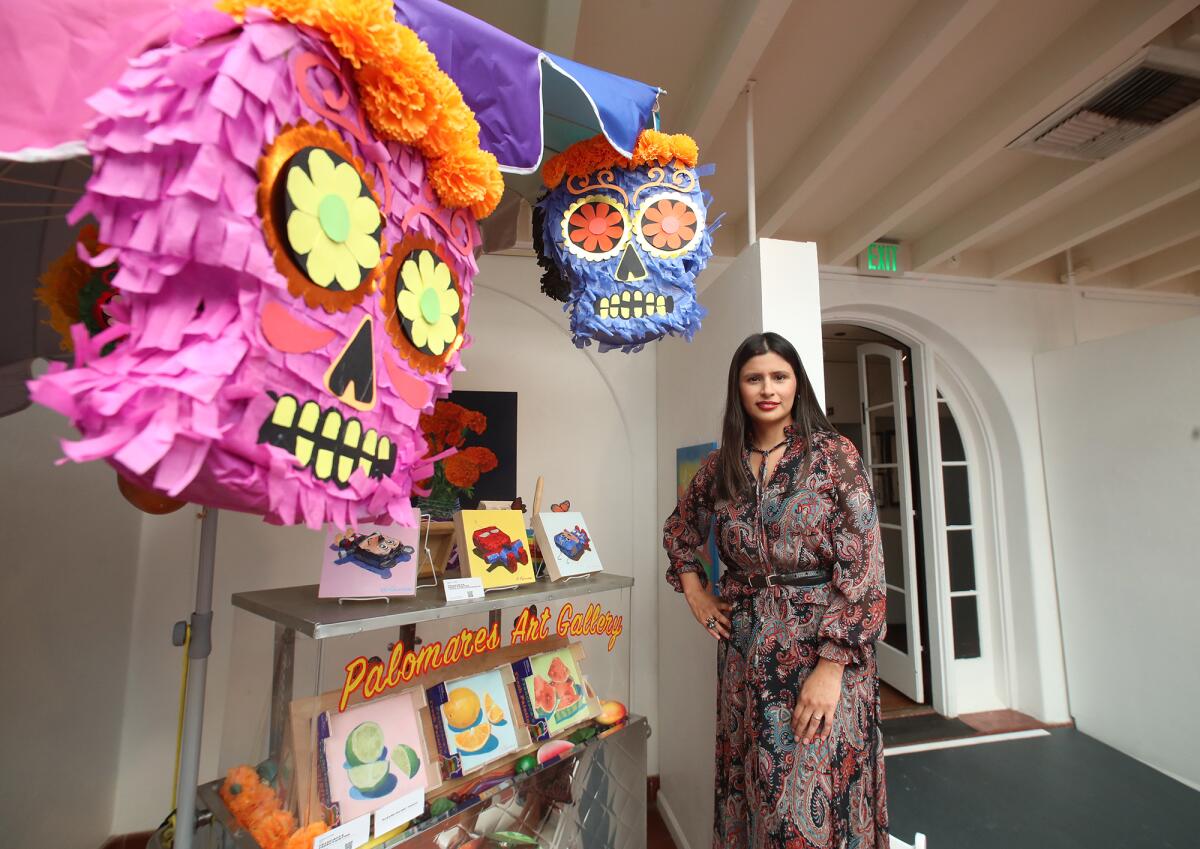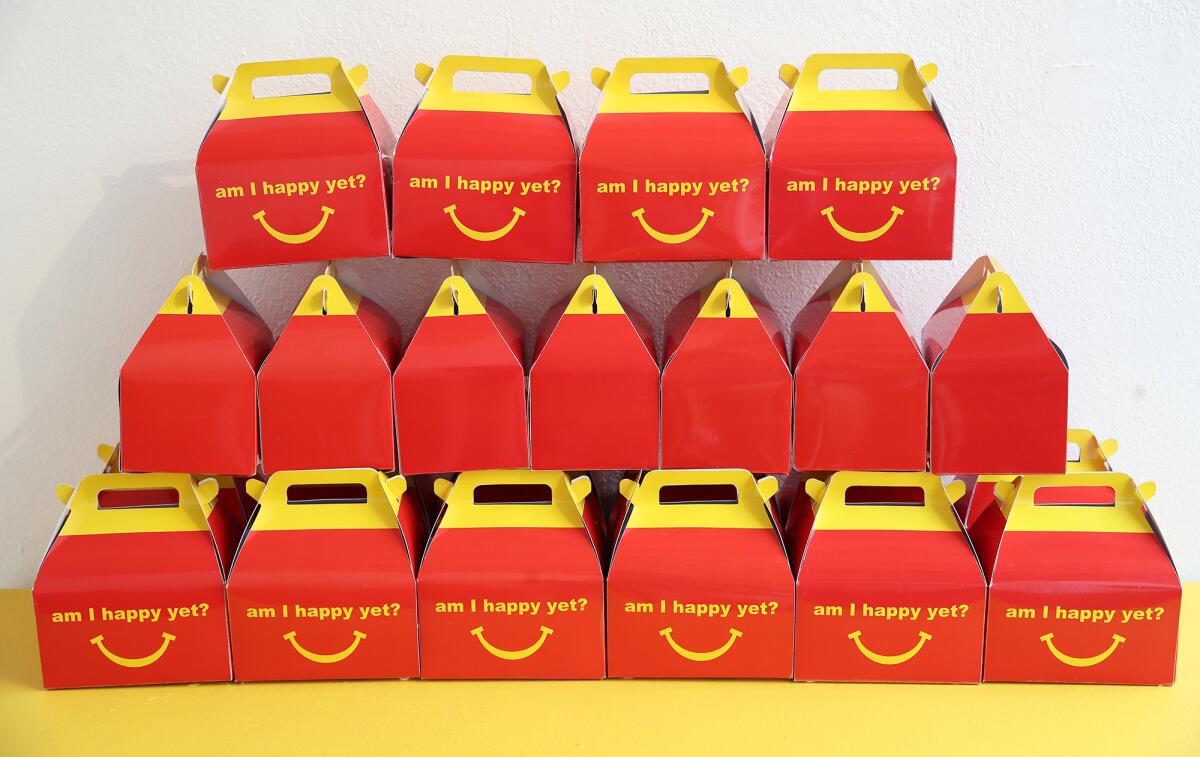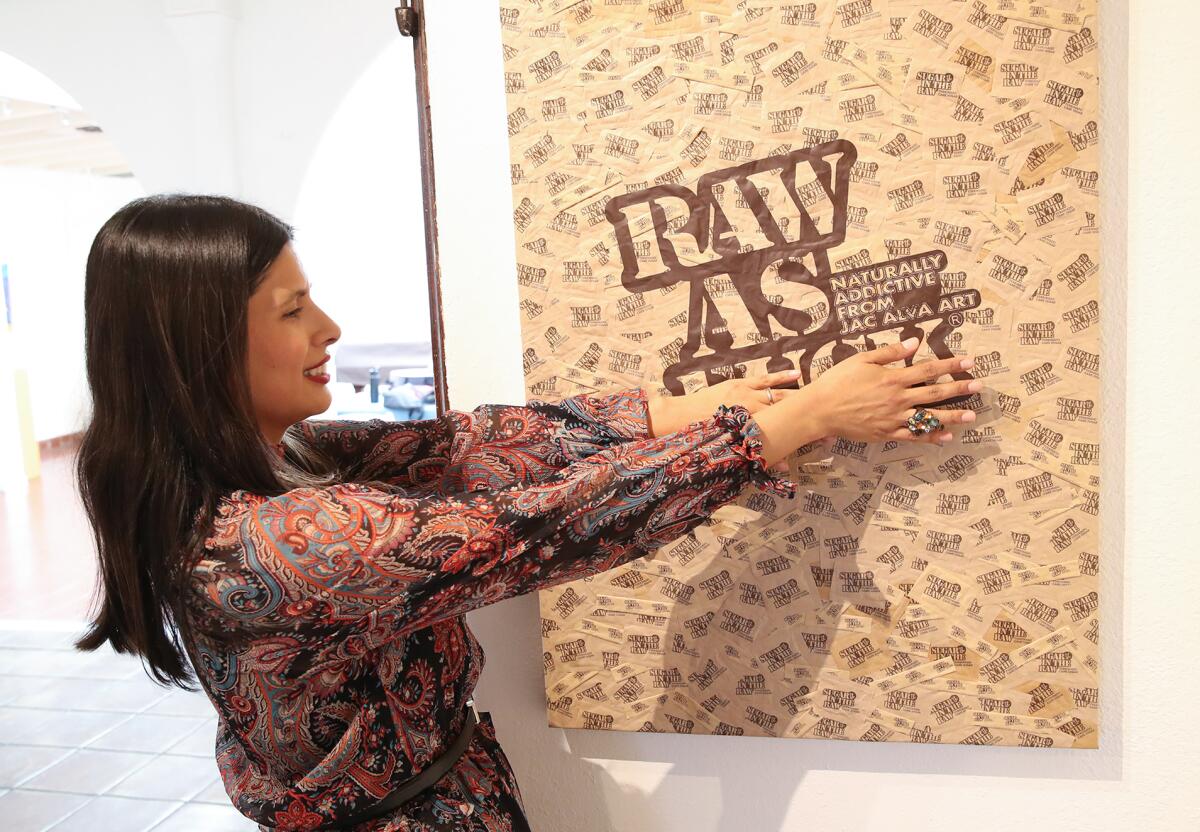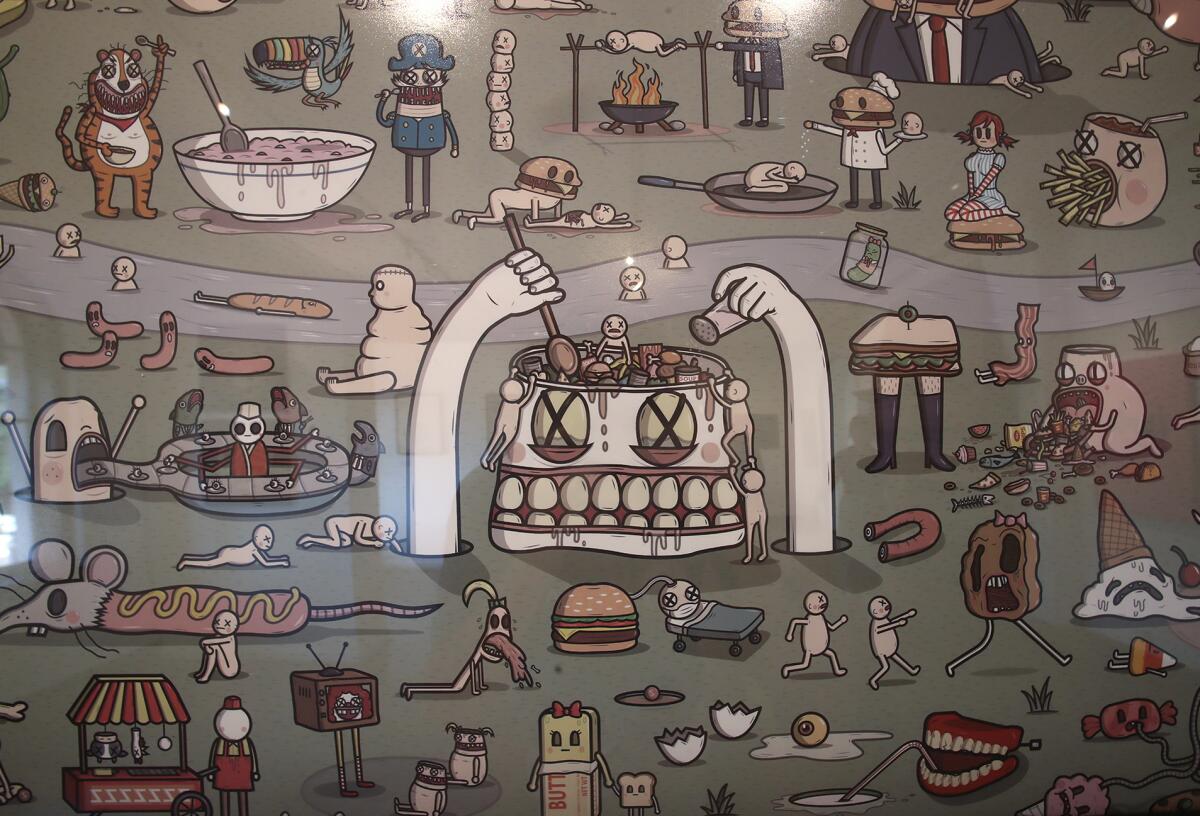‘Unsavory’ in Fullerton offers a taste of food politics

- Share via
Delicious food can give us so much. Besides providing sustenance and nutrition, it can bring joy and happiness. Food can be associated with memories and comfort, and it can teach us about our history or where we come from.
But the problematic and often destructive ways food is sourced in modern society can also leave a bad taste in one’s mouth. “Unsavory,” a new exhibit on view at the Muckenthaler Cultural Center in Fullerton, explores these issues. .
“I used to think about food as this very kind of neutral topic,” said curator Jac Alva. “We watch cooking shows, we gather and we eat, but we don’t think about how food is so often implicated in inequity, violence and disparities.”

Several years ago while completing her masters program at Azusa Pacific University, Alva analyzed a banana installation by Honduran artist Leonardo González at Muzeo Museum and Cultural Center in Anaheim. The work inspired Alva to take an academic and artistic approach to food.
“I realized food, to me, can no longer be neutral. In order for us to survive, so many times we are relying on those inequities, that violence, relying on other people’s misfortune in order for us to have food on the table.”
Alva has gathered the work of 15 artists who use fine art, photography, low-brow imagery and recycled art to challenge what we value when it comes to food consumption and, more importantly, what we don’t. Food is political, and “Unsavory” is designed to highlight the economic devastation caused by food waste, social injustices like the lack of healthy food options or access to nutrition education, and scarcity felt within food-insecure communities.
Alva addresses America’s dependence on sugar and her own struggles with artificial sweetener with a series that uses packets consumed by Alva herself to create collages that substitute expletives for traditional logos.

“This showcases this relationship I have with sugar, where I am addicted to it and I try to ween off of it by using artificial sweeteners, but I still seem to have the same problem,” said Alva.
Nearby, “Deplorable Food Freek,” a three-paneled work from graphic artist Greedy King, shows a landscape of nauseating depictions of food production, distribution and consumption from farm to fast food table.
“This is a play on Hieronymus Bosch’s ‘Garden of Earthly Delights,’ only instead of a depiction of heaven and hell, in this case he is taking what is occurring in the food industry and he is slightly perversing it,” Alva said. “But there is an element of reality in all three pieces.”

With the work of Allison Bergman and Marcelle Sirkus, authors of “Food Not Food,” real and natural food is photographed next to its artificially manufactured and processed counterparts.
“They are trying to educate the public about nutrition and about why it is we see things as food, when they are not because they are over-processed,” said Alva.
In one image, a ripe Red Delicious apple stands next to a red corn-syrup-lacquered candied apple. In another, a pile of French-cut green beans transitions into a pile of green licorice bites.
Contrast is a key element to “Unsavory.” The familiar is made unfamiliar, like with “Genetic Carnage” from Recycled Propaganda that uses the Chiquita banana logo but replaces the fruit in Miss Chiquita’s hat with hand grenades and arms her with a gun. Delicious-looking sculptures of snacks made from resin and polymer clay by artist Matthew Percale look like a frosted pieced of cake with blue icing, a soft-serve cone or an appetizing banana, but the tangle of earthworms within them prove repulsive.

An installation from Fransico Palomares brings attention to the plight of the food vendor by converting a mobile food cart into a vehicle for selling oil paintings of fresh fruit and piñatas.
“Street food vendors have to go through so many different issues, from the weather and the elements to the bureaucrat nightmare of trying to be a vendor and trying to sell food, also trying to adhere to health and safety inspections.”
Among the most powerful pieces in the exhibit is a service industry project from Ohio-based artist Morgan Bukovec, in which food isn’t even visually present. One hundred guest checkbooks are nailed to the wall, with sexist sayings cross-stitched on them for a piece titled “Are You on the Menu?”
Each check has a remark, command or question that male customers said to Bukovec during her time working as a server and bartender.
“Some of them are microaggressions, some of them are very blatant statements and some are extremely unsavory,” said Alva. “We are coupling this with an installation where you can share your story on a blank guest check. We are letting people express how they feel about this work but also share their own story.”

Alva maintains that the piece emphasizes the idea that food is political and even the experience of dining out can be hard to stomach when you consider all the complexities involved in the labor that makes restaurants possible.
“I think it is really important that we don’t shy away from understanding and empathizing with people that are in the service industry and the things that they face,” said Alva.
Events planned in conjunction with the exhibit include a book-signing with Bergman and Sirkus on Aug. 1 and a Q&A with artist Tony J. Smith on Aug. 8.
“Unsavory” is on view at the Muckenthaler Cultural Center in Fullerton in the Main Gallery until Aug. 30, Monday through Friday from 10 a.m. to 5 p.m.
All the latest on Orange County from Orange County.
Get our free TimesOC newsletter.
You may occasionally receive promotional content from the Daily Pilot.




